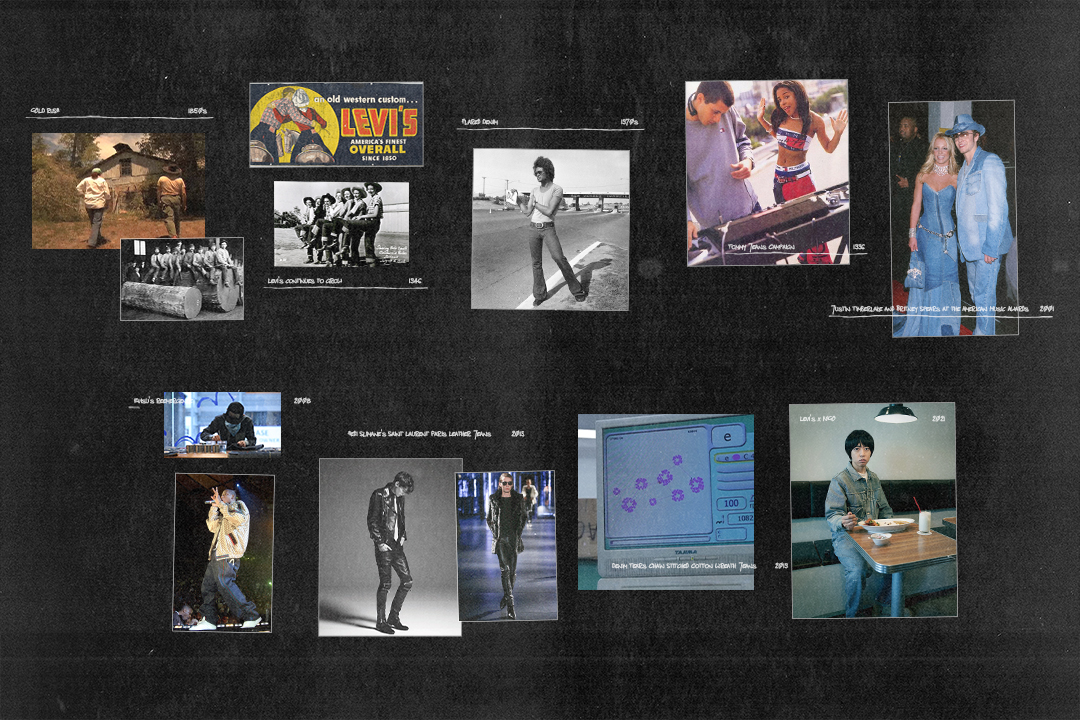I remember the first time I wore denim jeans as a child. It was a pair of sturdy, straight-legged jeans that had been passed down from my older brother. I instantly fell in love with the rugged feel and timeless look of denim. Little did I know then that denim would go on to become one of the most iconic and versatile fabrics in the fashion world.

Over the years, denim has evolved in countless ways, adapting to the changing preferences and styles of each generation. From its humble beginnings as workwear for miners and cowboys in the 19th century, denim has undergone a remarkable transformation, now being embraced by people from all walks of life.
The story of denim can be traced back to the town of Nimes in France, where the first denim-like fabric called serge de Nimes was created. This sturdy fabric later became known as denim, thanks to its association with Genoa, Italy, where it was regularly used for making sails. As it made its way across the Atlantic, denim found its true calling in the American West.
In the early 1900s, Levi Strauss, a Bavarian immigrant, revolutionized the denim industry by creating the first pair of blue jeans with riveted pockets. These sturdy trousers were designed to withstand the rigors of work and quickly gained popularity among miners and laborers.
It wasn’t long before denim started to transcend its practical roots and become a symbol of rebellion and counterculture. In the 1950s, rebellious youth, inspired by movie stars like Marlon Brando and James Dean, adopted denim as their own, turning it into a fashion statement. The rise of rock ‘n’ roll and the emergence of iconic figures like Elvis Presley further solidified denim’s place in popular culture.
As the decades rolled on, denim continued to evolve, catering to the changing tastes of each generation. In the 1960s and 70s, bell-bottom jeans and flares were all the rage, reflecting the free-spirited nature of the era. Then came the 80s, with its acid wash denim and ripped jeans, representing the bold and daring attitude of the time.
The 90s brought about a more relaxed and casual approach to denim. Baggy jeans and denim overalls became fashion staples, popularized by trendsetters like TLC and Will Smith on The Fresh Prince of Bel-Air. Denim became synonymous with comfort and laid-back style.
But perhaps the most significant shift in the world of denim came in the early 2000s, when designers started to experiment with new cuts, washes, and finishes. Skinny jeans, once considered a fringe style, burst into the mainstream and became a wardrobe essential for men and women alike. Denim also started to embrace technology, with the introduction of stretch fabrics that allowed for a more form-fitting and comfortable fit.
Today, denim is more diverse than ever before. From skinny to wide leg, high-waisted to low-rise, distressed to acid wash, there is a style to suit every taste and body shape. Denim jackets have also made a comeback, with innovative designs and embellishments that add a touch of personality to any outfit.
In addition to its endless style options, denim has also become a canvas for sustainability and ethical fashion. As awareness of the environmental impacts of the fashion industry grows, many brands are focusing on producing denim using organic and recycled materials, as well as implementing responsible manufacturing processes.
Denim has come a long way since its humble beginnings, evolving from workwear to a symbol of individuality and self-expression. Its ability to adapt to different trends and generations is a testament to its timeless appeal. Whether dressed up or down, denim remains a staple in our wardrobes, connecting us to a rich history while embracing the possibilities of the future. So next time you slide into your favorite pair of jeans, take a moment to appreciate the journey this iconic fabric has taken and the stories it continues to tell.


